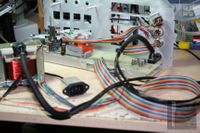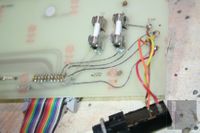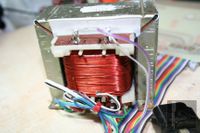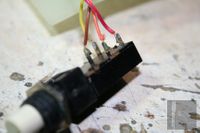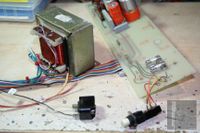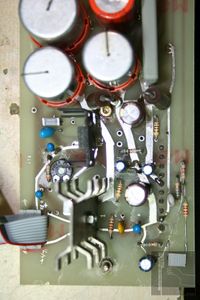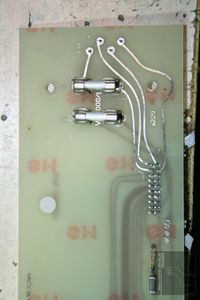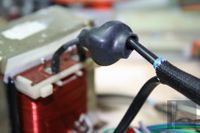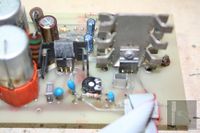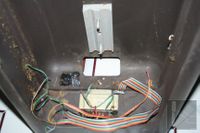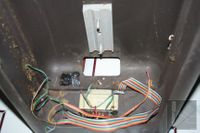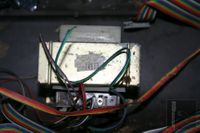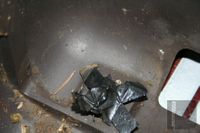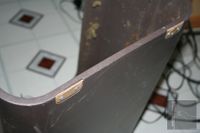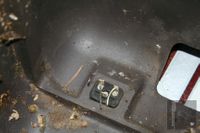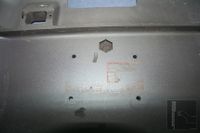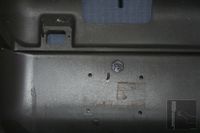Realton 'Variophon Standard' Mains Assembly
Note: Research of the Variophon Standard has been stopped due to leak of time in 2014.
At least the 'Variophon Standard' bears lethal electrical risks and must not be operated without modifications or safety precautions as described next:
As can be seen in the pictures above, the mains voltage is routet to the mains fuses and switch by the same low insulation/diameter flat ribbon cable. Even if the flat ribbon cable may be rated 300V-RMS (in the US) this is not sufficient for 230V mains voltage interconnections; even worse is the parallel routing of low-voltage signals within the same cable - seems the Realton Company had never heard of the appropriate safety-regulations.
There is a high risk of shorts and mains voltage access to e.g. the metal control-panel in case of overvoltage or insulation failure. There are dedicated mains-cables availabe (even in 1980) which prevent those issues and comply to the regulations.
What can be done? When no modification to the instrument shall be made, a separate sufficient mains insulating-transformer must be used. It is connected between the mains and the Variophon's mains-connector and prevents current flow from e.g. the Variophon's metal control-panel to the user in case of failure.
If the Instrument can be modified, e.g. because the heavy and bulky external insulation-transformer shall not be used, the mains routing has to be separated from the low-voltage cabling. This can be easily done by disconnecting the flat ribbon-cabling from the mains connector/fuses/switch (including removal of mains traces of the printed circuit board) and re-wiring the connections using dedicated mains-cables, as shown in the pictures below. In addition, a mains filter (incorporated in the IEC-Jack) was added. A new fuse was mounted near the mains filter directly to the lower housing.
